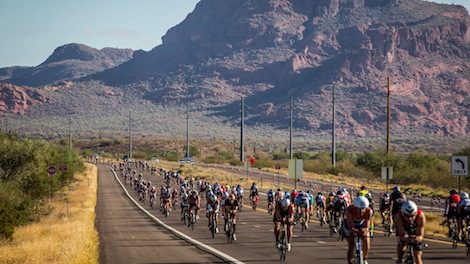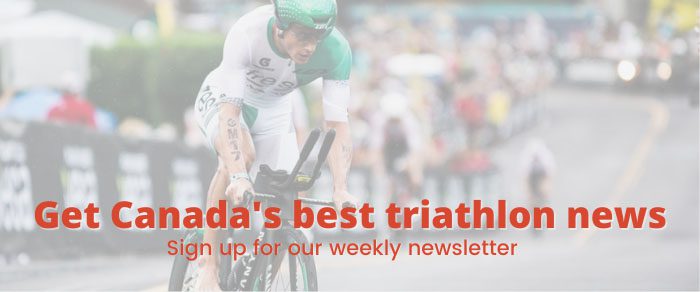Drafting at Ironman Arizona? Based on the numbers, there will be a lot of it
Big fields and three-loop courses are likely to make for "crowded" bike courses at the two Ironman races this weekend
 Photo by:
Ironman
Photo by:
Ironman
The two Ironman races on tap for this weekend, Ironman Arizona and Ironman Cozumel, are renowned as fast courses and, unfortunately, as courses where there’s lots of drafting (in the age group ranks, anyway). The race format at both events is a huge challenge for race referees thanks to the large fields and the three loop bike courses. Both courses are relatively flat (Cozumel much more so), which makes it even more of a challenge to break up groups – there are no climbs to separate the stronger riders from the rest of the bunch.
It’s hard to find an age group race report from either race that doesn’t include a note about how much drafting you’re likely to see, especially during the second and third loops. (The more diplomatic authors will refer to the course as being “busy.”)
After the 2017 Arizona race, in a story she wrote for wispsports.com, triathlon journalist Kelly O’Mara pointed out that with the large field and the three-loop course, it was “essentially impossible” to outride the packs that form in Tempe.
Under Ironman rules, the draft zone is 12m. There were 2,370 people who started Ironman Arizona this past weekend, which means the entire field would have stretched nearly from the start of the bike course to the turnaround point; if – and this is an important if – they were evenly spaced out and going the exact same speed.
Of course, the problem is, everyone’s not spaced out exactly evenly or going the same speed. By the time the professional men were finishing the first of three laps at Arizona on Sunday, they were running smack into the back of large groups of slower age-group swimmers starting their ride – just to make the drafting issues worse.
That was with 2,370 people on the out-and-back course. Based on our count (you can see the full list here), there are just under 3,600 registered athletes at Ironman Arizona. Even if 576 of those (16 per cent) don’t show up, there would still be roughly 3,000 athletes on the course on Sunday morning. With everyone riding 12 m apart – six bike lengths (sure, we’ll pretend it could happen) – the line of athletes would stretch for 36 km (22.4 miles). That’s all the way to the turnaround, then a few km back.
Related: Over 4,000 athletes on a two-loop course with a short swim … how good is your pack riding?
Ironman Cozumel had just over 2,200 finishers last year, with a 138 DNFs and 3 DQs. This year the field doesn’t appear to be as big – our count puts the field at about 1,700 registered – but that’s still a lot of people on a three-loop course. If we assume there will be a few hundred no-shows, the line of athletes would stretch for 18 km (just over 11 miles). Once again, that’s assuming everyone was “evenly spaced out and moving at the same speed.”
Like many triathlon fans, we’re excited about the new technology that hopes to help curb the issue of drafting in races – we reported on the Race Ranger product last year. For that technology to work, though, fields will have to be smaller, or one-loop courses would have to be the norm. It’s hard enough to get roads closed in many areas, so that’s not likely to happen at a lot of races, and Ironman isn’t likely to reduce its fields any time soon – especially after coming off a couple of years of no (or limited) racing thanks to the pandemic.
An even bigger issue, though, is that, for the most part, athletes don’t seem to care. If people were vehemently opposed to drafting, they wouldn’t be clamouring to compete at events like Arizona, Cozumel or Barcelona. But they do, and those races are likely to continue to enjoy huge fields, despite the “crowded” bike courses.
